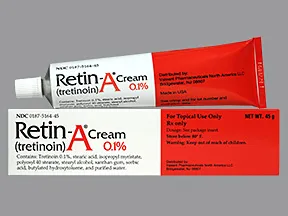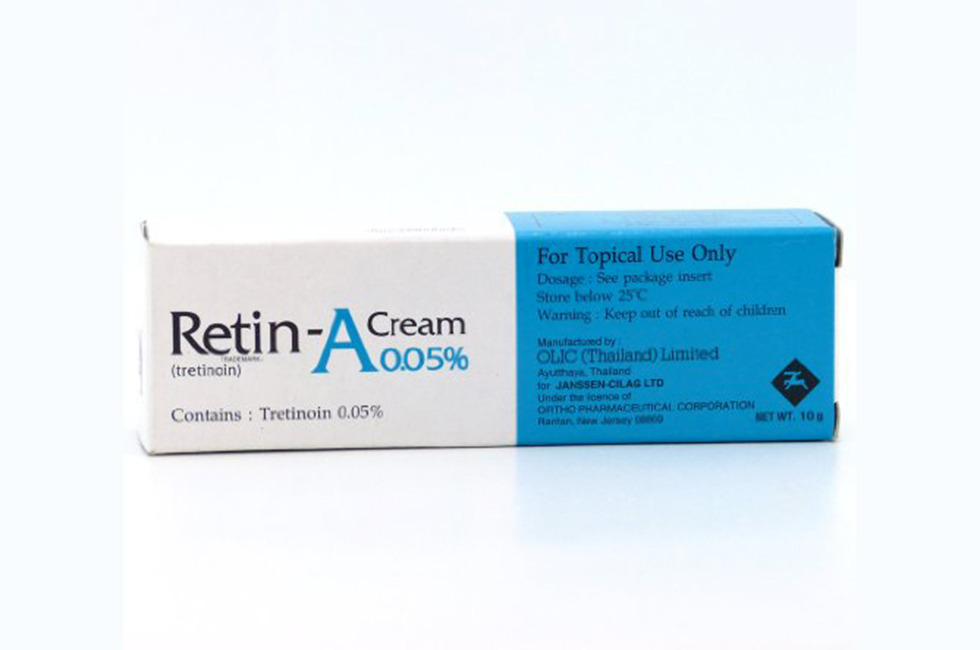

#PRESCRIPTION RETIN A SKIN#
The most prevalent of the dermatologic adverse events in the 0.04% group was skin irritation (6.4%) and in the 0.1% group skin burning (7.7%), erythema (5.1%), skin irritation (3.8%), and dermatitis (3.8%).
#PRESCRIPTION RETIN A TRIAL#
In a double-blind trial with 156 acne subjects comparing 12 weeks of treatment with Retin-A Micro (tretinoin) Gel, 0.04% or 0.1%, (78 subjects each group), the most frequently-reported adverse events affected the skin and subcutaneous tissue (15.4% in the 0.04% group, and 20.5% in the 0.1% group). Of these 14 subjects, four had severe irritation after 3 to 5 days of treatment, with blistering in one subject. In trials of Retin-A Micro (tretinoin) Gel microsphere, 0.1%, no more than 3% of subjects had cutaneous irritation scores indicative of severe irritation 6% (14/224) of subjects treated with Retin-A Micro (tretinoin) Gel microsphere, 0.1%, discontinued treatment due to irritation. In trials of Retin-A Micro (tretinoin) Gel microsphere, 0.04%, throughout the treatment period the majority of subjects experienced some degree of irritation (mild, moderate, or severe) with 1% (2/225) of subjects having scores indicative of a severe irritation 1.3% (3/225) of subjects treated with Retin-A Micro (tretinoin) Gel microsphere, 0.04%, discontinued treatment due to irritation, which included dryness in one patient and peeling and urticaria in another. Less than 10% of patients experienced moderate cutaneous irritation and there was no severe irritation at Week 2. Of those subjects who did experience cutaneous side effects, most had signs or symptoms that were mild in severity (severity was ranked on a 4-point ordinal scale: 0=none, 1=mild, 2=moderate, and 3=severe). In separate clinical trials for each concentration, acne subjects treated with Retin-A Micro (tretinoin) Gel microsphere, 0.1% or 0.04%, over the twelve-week period showed that cutaneous irritation scores for erythema, peeling, dryness, burning/stinging, or itching peaked during the initial two weeks of therapy, decreasing thereafter.Īpproximately half of the subjects treated with Retin-A Micro, 0.04%, had cutaneous irritation at Week 2. It also is advisable to allow the effects of such preparations to subside before use of Retin-A Micro is begun.īecause clinical trials are conducted under widely varying conditions, adverse reaction rates observed in the clinical trials of a drug cannot be directly compared to rates in the clinical trials of another drug and may not reflect the rates observed in practice.

Particular caution should be exercised with the concomitant use of topical over-the-counter acne preparations containing benzoyl peroxide, sulfur, resorcinol, or salicylic acid with Retin-A Micro. Patients treated with Retin-A Micro may use cosmetics.Ĭoncomitant topical medication, medicated or abrasive soaps and cleansers, products that have a strong drying effect, products with high concentrations of alcohol, astringents, or spices should be used with caution because of possible interaction with tretinoin. Retin-A Micro should be kept away from the eyes, the mouth, paranasal creases of the nose, and mucous membranes. Therapeutic results may be noticed after two weeks, but more than seven weeks of therapy are required before consistent beneficial effects are observed. If tolerated, this should not be considered a reason to discontinue therapy. Efficacy has not been established for less than once daily dosing frequencies.ĭuring the early weeks of therapy, an apparent exacerbation of inflammatory lesions may occur. Frequency of application should be closely monitored by careful observation of the clinical therapeutic response and skin tolerance. In cases where it has been necessary to temporarily discontinue therapy or to reduce the frequency of application, therapy may be resumed or the frequency of application increased as the patient becomes able to tolerate the treatment. A transitory feeling of warmth or slight stinging may be noted on application. If medication is applied excessively, no more rapid or better results will be obtained and marked redness, peeling, or discomfort may occur. Areas to be treated should be cleansed thoroughly before the medication is applied. Retin-A Micro should be applied once a day, in the evening, to the skin where acne lesions appear, using enough to cover the entire affected area in a thin layer. Not for ophthalmic, oral, or intravaginal use. Retin-A Micro Dosage and Administrationįor topical use only.


 0 kommentar(er)
0 kommentar(er)
